The capital city of Saxony is the second-most populous city in the state after Leipzig and the 12th-most populous city in Germany.
Dresden is, however, home to some of the most stunning feats of architecture in the country, most of which can be found in the historical heart of the city.
Established along the banks of the Elbe River, the city has a relatively short history as it was only mentioned for the first time in the 12th century.
Back then, it was a Sorbian (West Slavic) village called Drežďany which translates to “forest dweller.” Yes, not exactly what you expect of a major city.
The main expansion of the city happened during the reign of the Elector and ruler of Saxony Frederick Augustus I (1670-1733). He became Augustus II, King of Poland, and turned Dresden into his main residence.
Many of the most notable landmarks in Dresden were commissioned during his reign and still define the architectural landscape of the city today.
Another important moment in Dreden’s history happened in 1806 when Napoleon I made it the capital of the Kingdom of Saxony. The city grew to over 100,000 inhabitants in the following decades.
So what are some of the most famous buildings in Dresden? Let’s check them out!
1. Dresden Castle
Dresden Castle or “Dresdner Residenzschloss” is one of the oldest buildings in Dresden and has been one of the most important ones in the city for multiple centuries. It started as a Romanesque building that was nothing more than a medieval fortification and was expanded numerous times throughout its history.
The most distinctive feature of this famous castle is the Hausmannsturm, a structure that was completed in the early 15th century. The building was further expanded in the Renaissance style and also features a large number of Baroque elements that date back to the period of Augustus II. Today, the building is used as a museum.
Official website: Dresden Castle

2. Zwinger Palace
Zwinger Palace is a large palace complex in the heart of Dresden and one of the most famous landmarks in the city. It’s the epitome of Baroque architecture in Germany. Most of the buildings were constructed during the reign of Augustus II and completed between 1710 and 1728.
Even though the buildings and pavilions are extensive, the main focus of these structures was to serve as a beautiful background to the gardens in the center of the complex. It’s here that Augustus II threw lavish parties to flaunt his wealth and power in the early 18th century.
Official website: Zwinger

3. Semper Gallery
The Semper Gallery is one of the buildings at the Zwinger Palace complex that wasn’t constructed during the 18th century. It’s a later addition that was constructed between 1847 and 1854 to fill the eastern part of the Zwinger courtyard, an area that still overlooked the Elbe River in the 19th century.
This Neoclassical building was named after renowned German architect Gottfried Semper (1803-1879), a man who left his permanent mark in the city of Dresden. Today, this building houses the Old Masters Picture Gallery or “Gemäldegalerie Alte Meister,” an art museum that houses an incredible collection of paintings.
Official website: Gemäldegalerie Alte Meister

4. Dresden Frauenkirche
The Dresden Frauenkirche is a Lutheran church that was originally constructed as a Catholic church but which reconstructed between 1726 and 1743 following the Reformation. It’s located at the northeastern tip of the Neumarkt, just walking distance east of the Zwinger palace.
This beautiful church is another incredible example of Baroque architecture that features a monumental dome. Unfortunately, the original church was destroyed during the Allied bombing at the end of World War II but the church was completely reconstructed between 1993 and 2005.
Official website: Frauenkirche
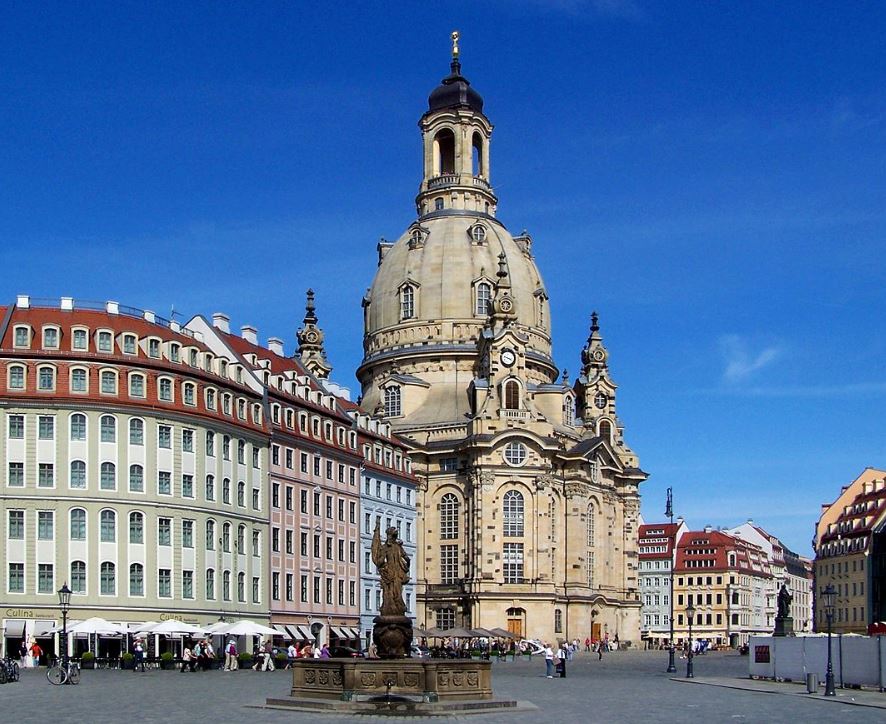
5. Semperoper
The Semperoper is the main opera house in the city and another amazing landmark in Dresden that was named after its architect, Gottfried Semper. This monumental structure is located on the Theaterplatz, a popular square in the city’s historic heart right east of the Zwinger Palace.
The original opera house was completed in 1841 but it was rebuilt following a fire in 1865. The opera house officially opened its doors in 1885. What’s remarkable about this structure is that it incorporates 3 different styles: Renaissance Revival, Baroque Revival, and Neoclassical architecture.
Official website: Semperoper

6. Pillnitz Castle
Pillnitz Castle is another beautiful castle that can be found in the utmost eastern outskirts of Dresden. It’s located along the banks of the Elbe River on the opposite side of the city. It’s situated within a beautiful park that features a botanical garden and that covers an area of 28 hectares (69.18 acres).
The castle was used as the Summer Palace of the electors of Saxony and features three different structures. The Hillside Palace, which is the oldest section, the Riverside Palace, and the New Palace. Today, the structure is known as the Palace Museum and it houses the arts and crafts museum and the Dresden State Art Collections.
Official website: Pillnitz Castle
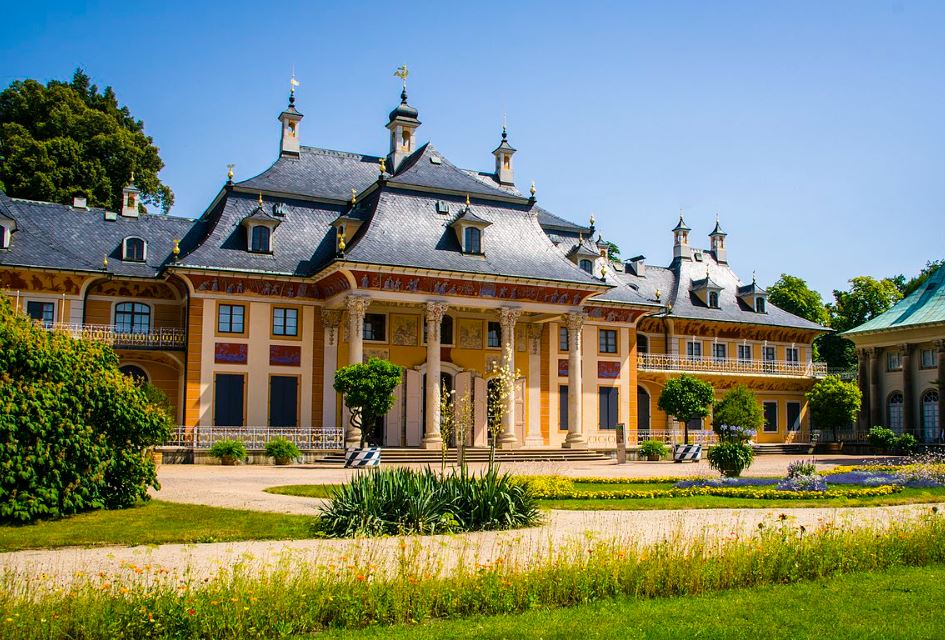
7. Japanisches Palais
The Japanisches Palais is yet another amazing Baroque building that is located on the Neustadt bank of the Elbe River. It can easily be reached via the historic Augustus Bridge which dates back to the early 20th century and is situated near the Zwinger Palace. This marvelous palace was constructed in 1715 and extended between 1729 and 1731.
It was built to house the extensive collection of Japanese porcelain of Augustus II. What’s remarkable is that it was never used for this purpose and was instead modified to serve as the Saxon Library. Today, the building houses 3 museums, the Museum of Ethnology Dresden, the State Museum for Pre-History, and the Senckenberg Natural History Collection.
Official website: Japanisches Palais
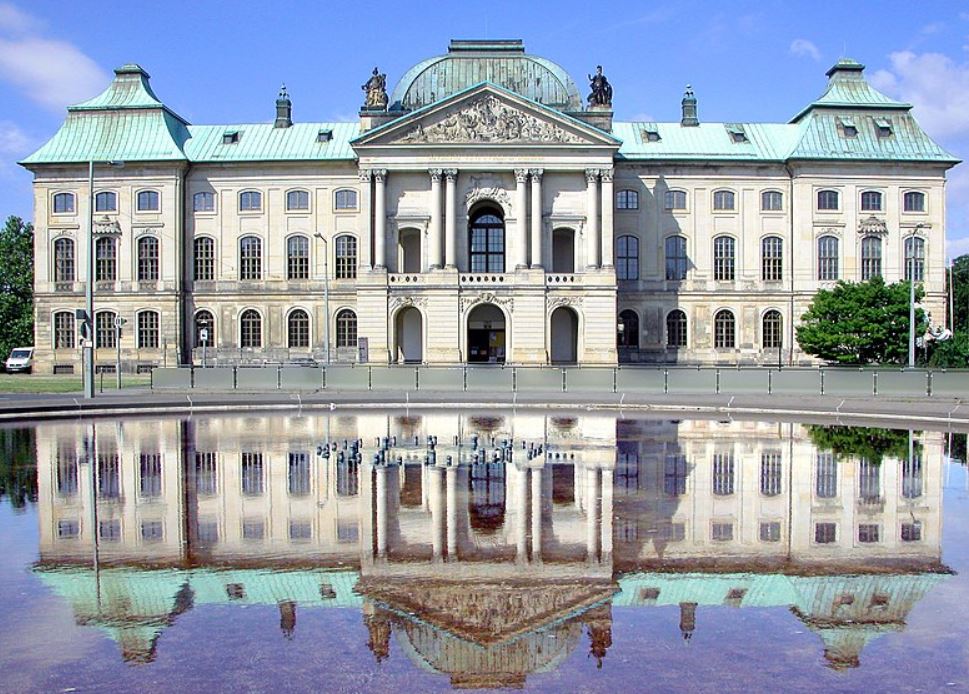
8. Dresden Cathedral
Dresden Cathedral is the common name of a church referred to as either the Cathedral of the Holy Trinity, Dresden, or the “Kathedrale Sanctissimae Trinitatis.” It’s the main Catholic cathedral in Dresden and is located just east of Theaterplatz and the Zwinger palace complex.
It has been the most important Catholic church in Dresden ever since it was completed between 1739 and 1751 and was elevated to the rank of the cathedral and seat of the Diocese of Dresden–Meissen in 1964. Augustus II is buried inside the crypt along with many of his notable family members.
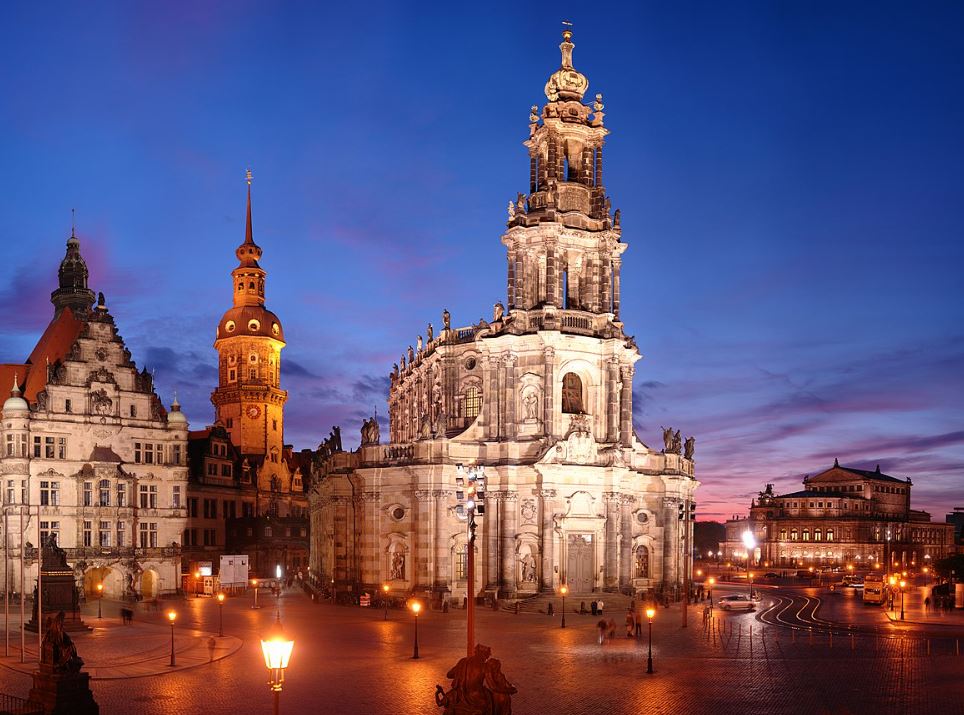
9. Johanneum
The Johanneum is a beautiful Renaissance building and one of the older buildings in Dresden. It was constructed between 1586 and 1590 and was originally referred to as the “Stallgebäude” or “Srable buildings.” That’s because it served as the stables of the nearby Dresden Castle.
Apart from about 128 horses, the building also housed the armory collection of the Dukes of Saxony around this time. The building was expanded with a second floor on the orders of Augustus II between 1730 and 1731 and today, it houses the Dresden Transport Museum.
Official website: Dresden Transport Museum
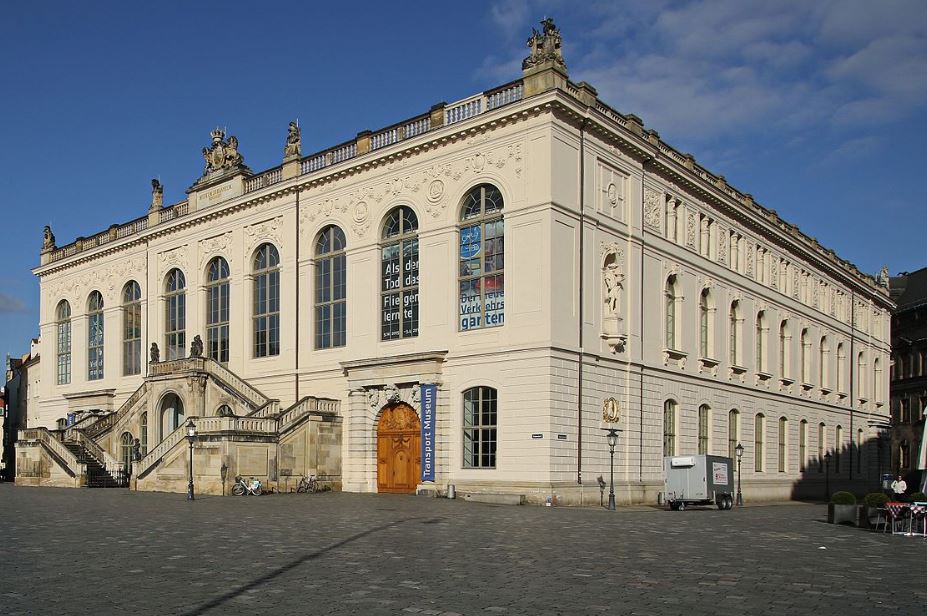
10. Dresden Central Station
Dresden Central Station or “Dresden Hauptbahnhof” is the main train station in Dresden and probably the place where you’ll arrive if you plan to visit by train. It first opened its doors in 1898 and replaced an even older train station known as the Böhmischen Bahnhof or “Bohemian station.”
The main building features a remarkable glass dome and the concourses are sheltered by Teflon-coated glass fiber membranes. As you surely expected, these were only added during a restoration project conducted in the early 21st century. These surely add a lot of daylight to the station which makes it an enjoyable place to arrive in the city.
Official website: Dresden Hbf



